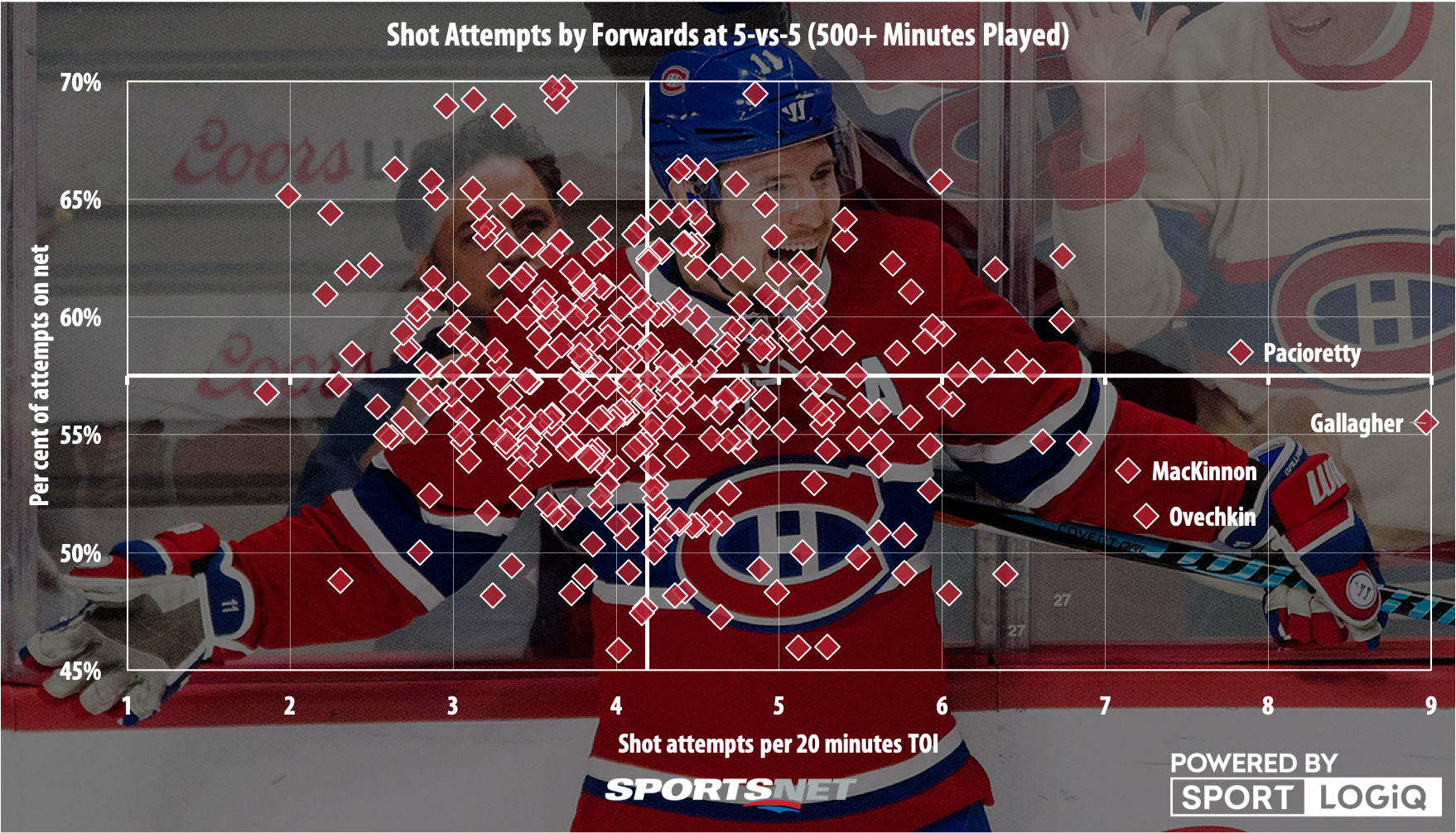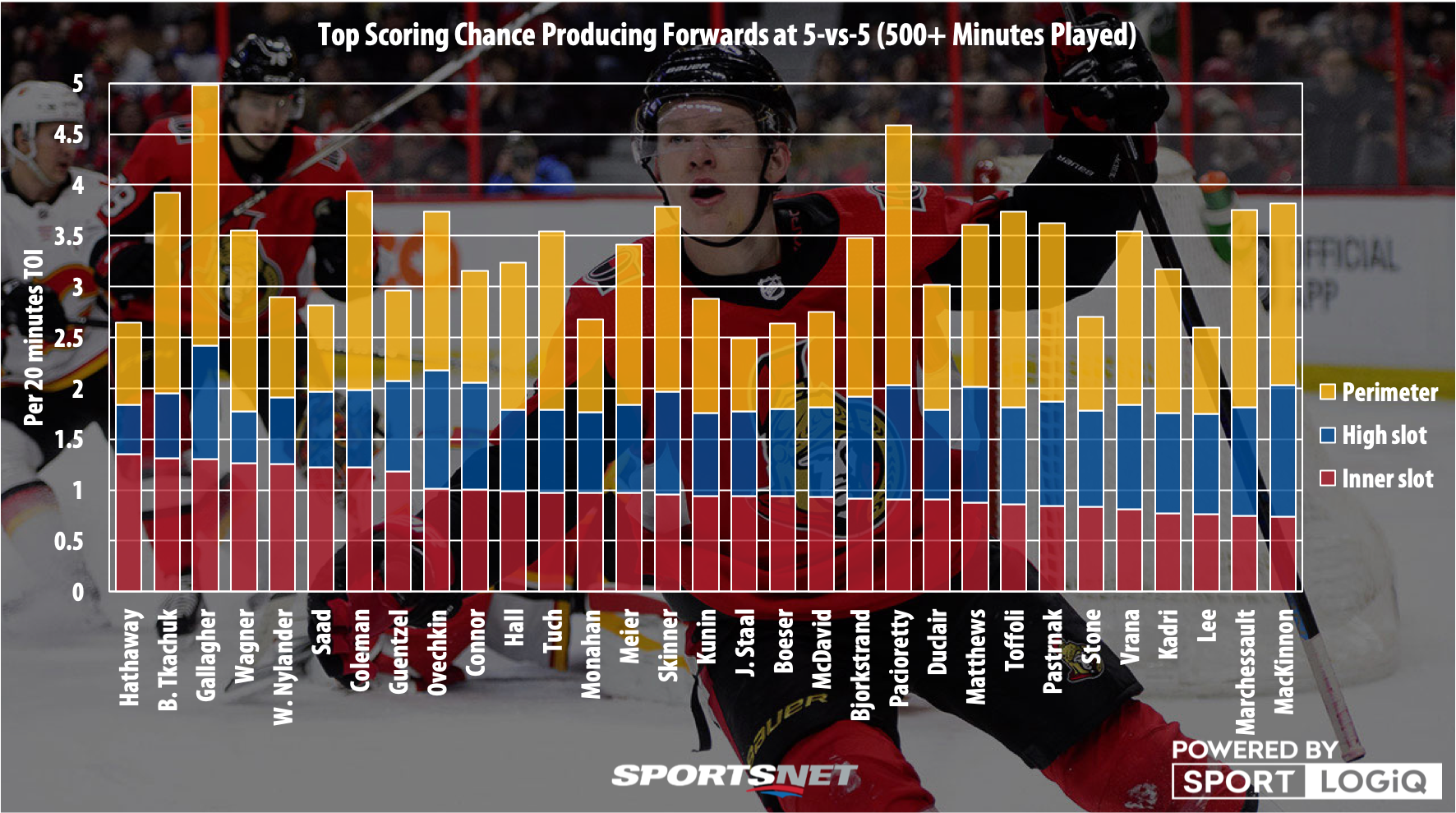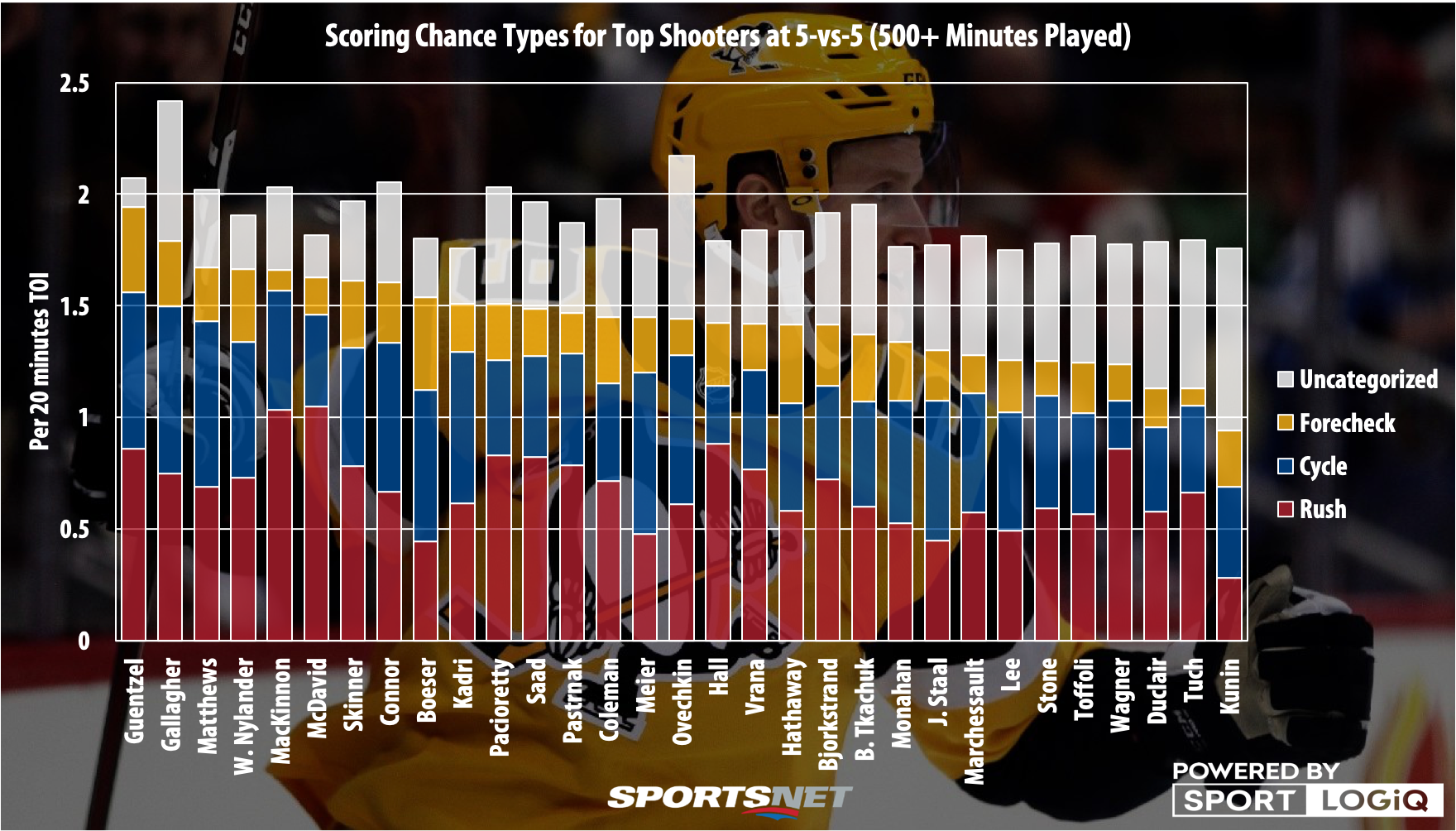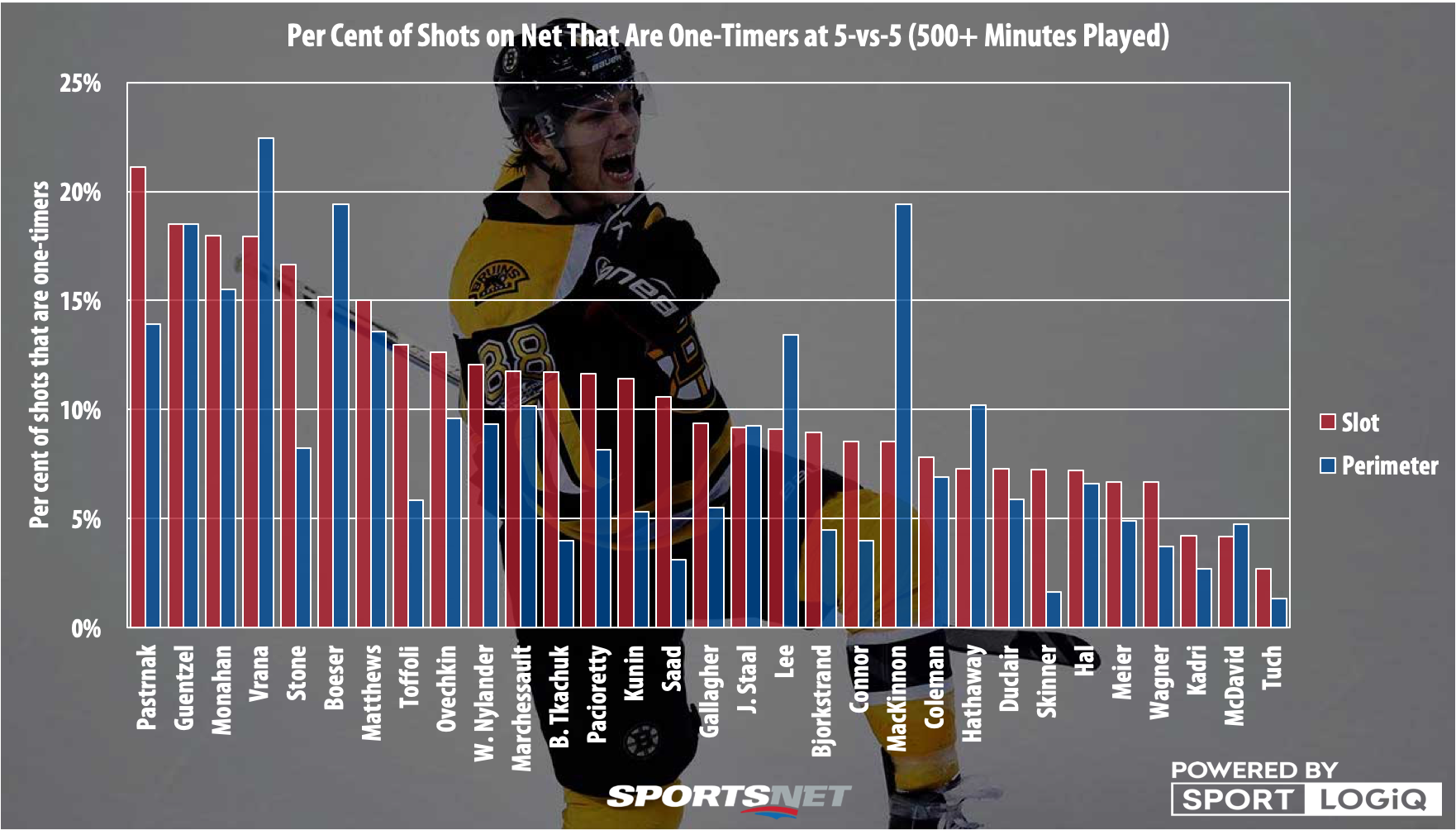Before the season began, we took a look at the best shooters in the NHL at 5-vs-5 using the previous season’s data, breaking things down into four different types of analysis in order to get as broad of an understanding of what creates goals at even strength and who excels in each area.
With the NHL’s season on hold, now is a great time to revisit that analysis and others like it to see how things have shaken out in 2019-20 so far.
Like I mentioned back in September, there will always be an element of goal scoring that’s lost in the data, some players are just more talented than others and will score at a much higher rate on shots that may not be exceptionally dangerous for an average player. Patrik Laine fits into that mould for example.
The most accurate way of viewing this would be to say who are the best high-volume shooters in the NHL at 5-vs-5, and because there is an opportunity afforded by more ice time, we’re going to use pro-rated statistics to make sure we don’t miss a young player who may be ripping up the league in limited minutes. With that said, we also want to control for sample size as well, so we’ll limit this to forwards who have played at least 500 minutes at 5-vs-5, which gives us a group of 336.
With all that out of the way, let’s start with the best forwards at creating pure shot volume — every shot has a chance to beat a goalie, right?

Last season’s even strength shot volume king has not been unseated, with Brendan Gallagher producing a nearly identical stat line in comparison to last season — though he has put a slightly higher percentage of his attempts on net. Through injuries and another tumultuous season in Montreal, Gallagher remains the picture of shooting consistency at 5-vs-5, a strong reminder of why he has earned his reputations as one of the fiercest offensive zone competitors in the sport.
Like last season, there are three other players who have managed over seven shot attempts every 20 minutes of ice time, though they are completely different than last season. Filip Forsberg, Viktor Arvidsson, and Timo Meier have all fallen back a bit, while Max Pacioretty, Alex Ovechkin, and Nathan MacKinnon have taken off.
Pacioretty is the only player of the group of four who has hit the net on a higher-than-league-average percentage of his shot attempts, but Ovechkin and Mackinnon being significantly below league average should tell you that missing the net or having your shots blocked are not big mitigating factors in scoring goals.
Volume is great, but now it’s time to drill down on the quality side of things, looking at the top 31 players (in honour of the league’s 31 teams) in scoring-chance production, to see what kind of quality chances they’re producing with their shots on net.

One of the fun parts of doing analysis like this is you get to say things like “Garnet Hathaway? Who?” Well Garnet Hathaway has played limited minutes for the Washington Capitals, and the journeyman has played a very specific role — namely getting to the front of the net. He only has nine goals to show for it this year, but per minute he’s scoring at a similar pace to John Tavares at 5-vs-5. Tavares is having an off year, and I think we all know Hathaway isn’t elite at 28 years old, but that’s a nice little secret tucked away in your depth forwards heading into the playoffs for Washington.
Hathaway is an extreme outlier, but following him are two of the best net-front players in the NHL in Brady Tkachuk and Gallagher, both experts at fighting for space and making teams pay for letting out rebounds.
At the other end of the spectrum is MacKinnon, who isn’t that shy about getting to the net front, but much prefers to shoot from the high slot where he has more space to move and pick his spot. Many players that fans would consider snipers are those who shoot more often from the high slot for these reasons.
Meanwhile the best goal scorer of his generation, and in my opinion, of all time, has a surprisingly balanced approach. Ovechkin is known for shooting from the so-called Ovi Spot, but that’s mostly a power-play thing. At even strength, he’s just as likely to crash the net as he is to rip a one-timer from there.
Going one layer deeper, let’s look at how these players get their scoring chances. Who benefits most by creating off the rush for example?

Ordering by the combination of the three factors that create higher-quality scoring chances, we get another different name at the top of the list in Pittsburgh Penguins scoring machine Jake Guentzel. Constantly playing with either Sidney Crosby or Evgeni Malkin certainly helps get Guentzel a shocking number of good looks at the net, but you don’t see Zack Kassian on here (no offence to him), so credit where it’s due — Guentzel is a part of the reason why he’s a chance machine at even strength.
Right behind Guentzel is a familiar name in Gallagher, who was also second on this graphic last season behind Arvidsson. Part of it is going to be the pure volume of shots that Gallagher takes, but he doesn’t lack for quality at all. Attacking in equal proportion off the rush and off the cycle, Gallagher forces himself into the conversation any way you slice it.
With a very similar profile to Gallagher, two Maple Leafs are next in line. Auston Matthews is not a surprise — he’s been the NHL’s leading even-strength goal scorer since he entered the league. But how about William Nylander? For a guy who many claim can’t hit the net, Nylander’s first 30-goal season isn’t a mirage — he’s creating a high volume of high-quality chances.
After them comes the premier rush attackers in the league, with Connor McDavid and MacKinnon using their blazing speed to put defenders on their heels on a consistent basis. Both players have been less than impressive off the cycle this season, likely due to a drop in quality of linemates due to injury for MacKinnon, and for McDavid, due to the Oilers deciding to put Draisaitl on his own line.
Lastly, what about pre-shot movement? Not just in general, but how well do these players quickly turn a pass into a shot on net? Let’s look at one-timers.

Here is where we see one of the NHL’s scoring leaders this season suddenly move from the middle to the top of the pack, as David Pastrnak has blown his competition away with his quick release after his teammates find him with cross-ice passes. Pastrnak has a wicked one-timer, and the Bruins have leaned into that on a systemic level, which allows him to produce strong but not game-breaking levels of scoring chances, and to make bank on a ridiculous number of them.
Guentzel is right there behind him, another sign of the great teammates he plays with and his ability to finish their plays off. Guentzel hasn’t drawn into a game since Dec. 30, and you’ve got to think the Penguins miss him mightily.
Last season’s leader in percentage of slot shots that are one-timers was Sean Monahan, and he’s next up here. He’s actually increased his one-timers a little bit, but Pastrnak and Guentzel have just been other worldly.
Last season the one area where Matthews wasn’t among the top of the pack was in getting one-timers, where just over six per cent of his slot shots were of that type, but this season has seen a big change, with one-timers rocketing up to 15 per cent of his total shots on net from the slot. If you’re looking for a reason why he’s gone from scoring at about a 45-goal pace per 82 games to 55 this year, that would be what I would point to.
On the other end of the spectrum, McDavid was on pace for a third straight 40-goal season with just over four per cent of his scoring chances being one-timers. Someone get this guy a linemate who can pass.
This is also the area where Gallagher falls back a fair amount, but it’s interesting to note that while last season only about four per cent of his shots from the slot were one-timers, this season he’s close to 9.5 per cent, more than double. Phillip Danault growing as a playmaker has really helped Gallagher in that area, and Gallagher’s game diversifying a little bit beyond just being a net-front guy helps as well.
One weird outlier here is MacKinnon, who seems to have to do a lot of work on his own within the slot area, but creates a lot more danger from the perimeter than most forwards as well nearly 20 per cent of his shots from the outside being one-timers.
Even with all this information to draw on, I’m not sure a clear front-runner emerges here. Gallagher may have the best case, but with a career shooting percentage under 10 per cent, and shooting below his career average this year, can we really call him the best even strength shooter? In the end, how much you value the inputs that create goals compared to the actual goals themselves is a personal choice.







